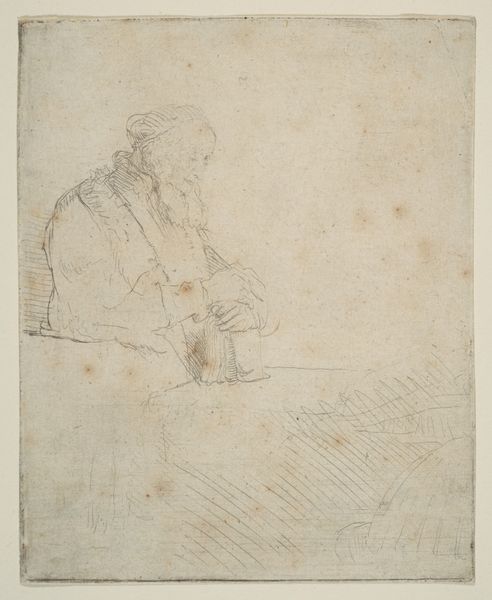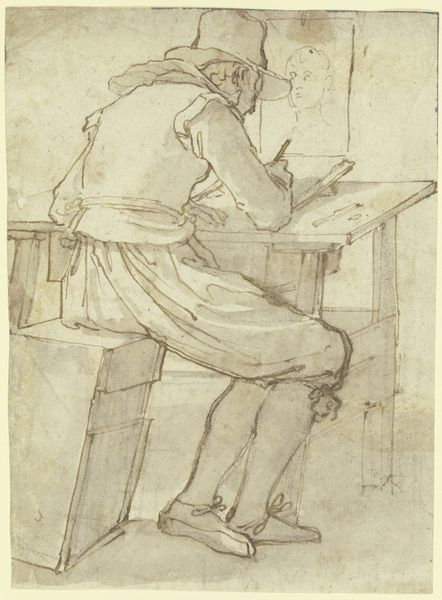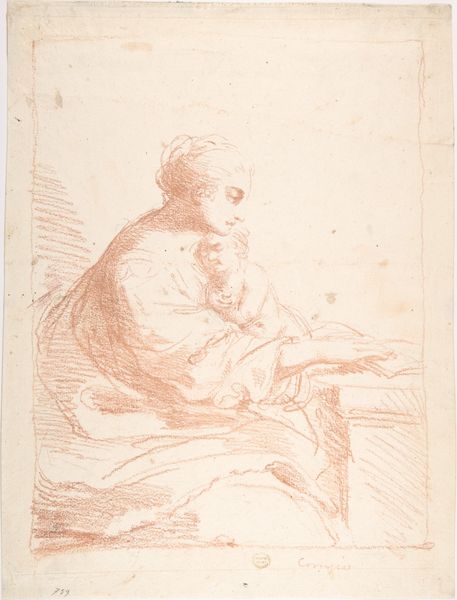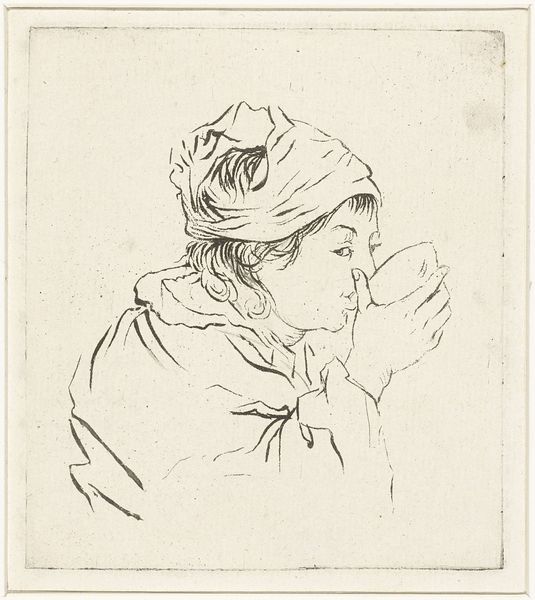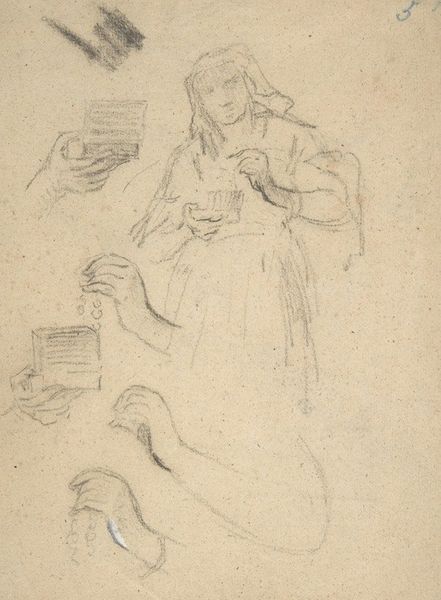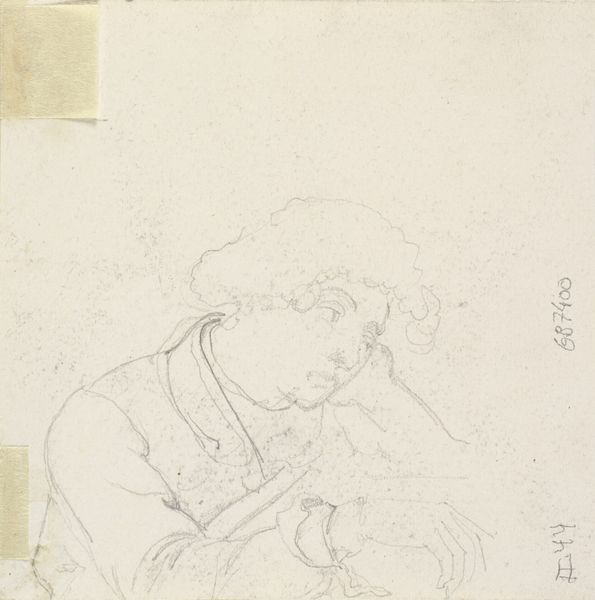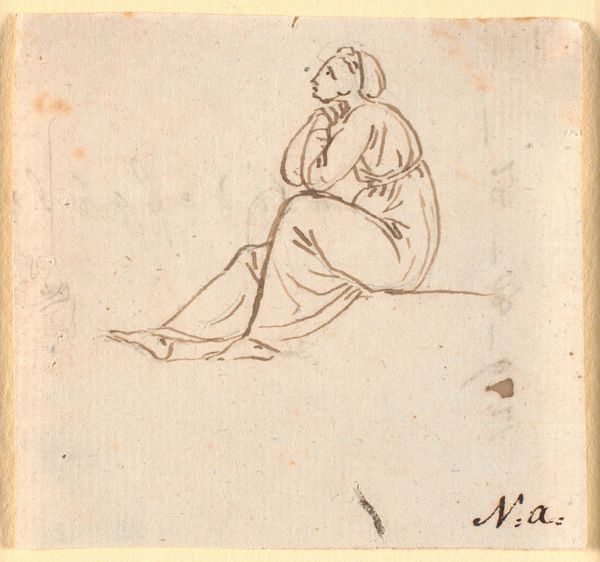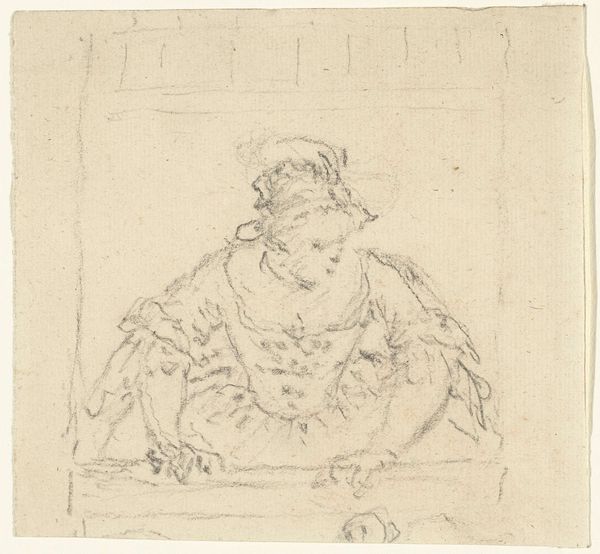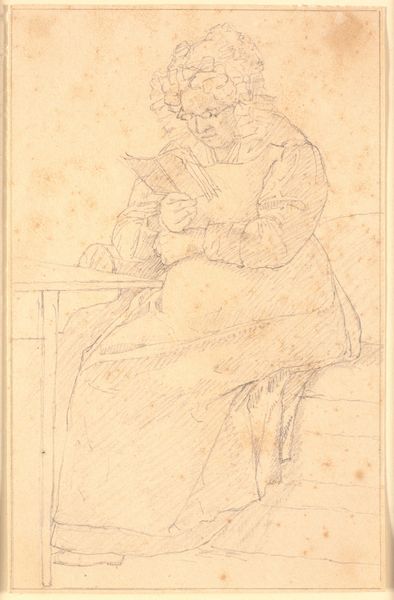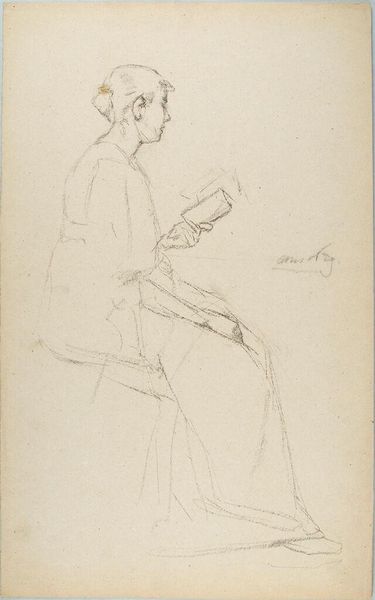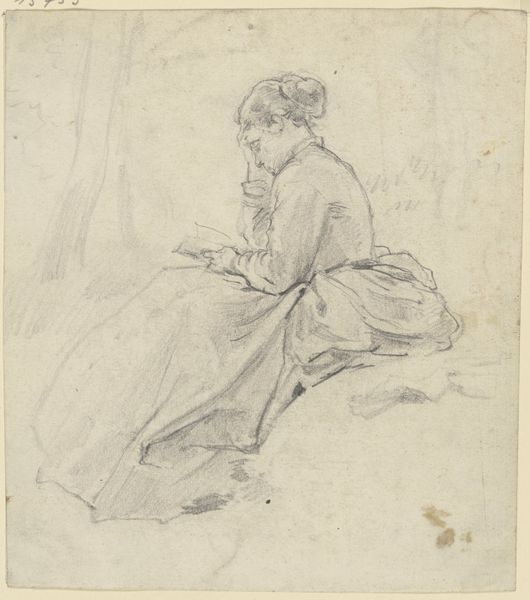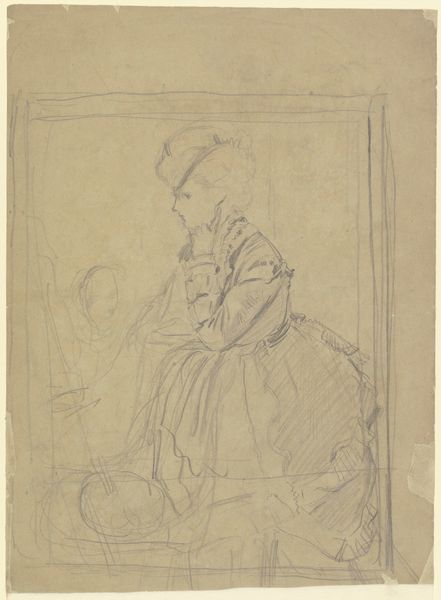
Halbfigur einer im Profil nach rechts sitzenden jungen Frau, die in einem Buch liest c. 1635 - 1640
0:00
0:00
drawing, paper, ink
#
portrait
#
drawing
#
baroque
#
figuration
#
paper
#
ink
Copyright: Public Domain
Editor: Here we have Rembrandt van Rijn's "Half-Figure of a Young Woman Sitting in Profile to the Right, Reading in a Book," created around 1635-1640 using ink on paper. I find her quiet concentration so captivating. What can you tell me about it? Curator: It's interesting how a simple sketch can convey so much. Notice how Rembrandt uses the turban; in the 17th century, these weren't merely head coverings, but carried potent associations with the Orient, with wisdom, and even exoticism. Rembrandt often used them to invoke a sense of the historical or biblical, suggesting this isn't just a portrait but an allegorical figure, maybe a Sibyl or prophetess immersed in sacred texts. Does that resonate with you? Editor: It does! I was so focused on the quiet intimacy that I didn’t immediately think about broader symbolic meanings. So, the turban transforms her from just a young woman reading into someone…more? Curator: Exactly. It's Rembrandt layering meaning. The act of reading itself, then, becomes more significant, suggesting the pursuit of knowledge and understanding that transcends the everyday. Notice how the ink washes create a soft, contemplative mood. What feelings does that evoke? Editor: A sense of deep reflection and maybe the value of solitary thought. It's lovely how he elevates this quiet act to something more significant through symbolic cues. Curator: Indeed, he taps into the cultural memory of readers as wise figures. It is almost as if in our society, where it can sometimes seem like attention spans are fleeting, a work such as this causes us to pause and reassess the act of slow, mindful reading. Editor: This piece makes me consider the power of simple sketches and how they can hold surprisingly rich layers of cultural and personal meaning. Curator: Agreed, and it illustrates the enduring impact that visual symbols hold across the ages, continuously being reinterpreted and recontextualized.
Comments
No comments
Be the first to comment and join the conversation on the ultimate creative platform.
